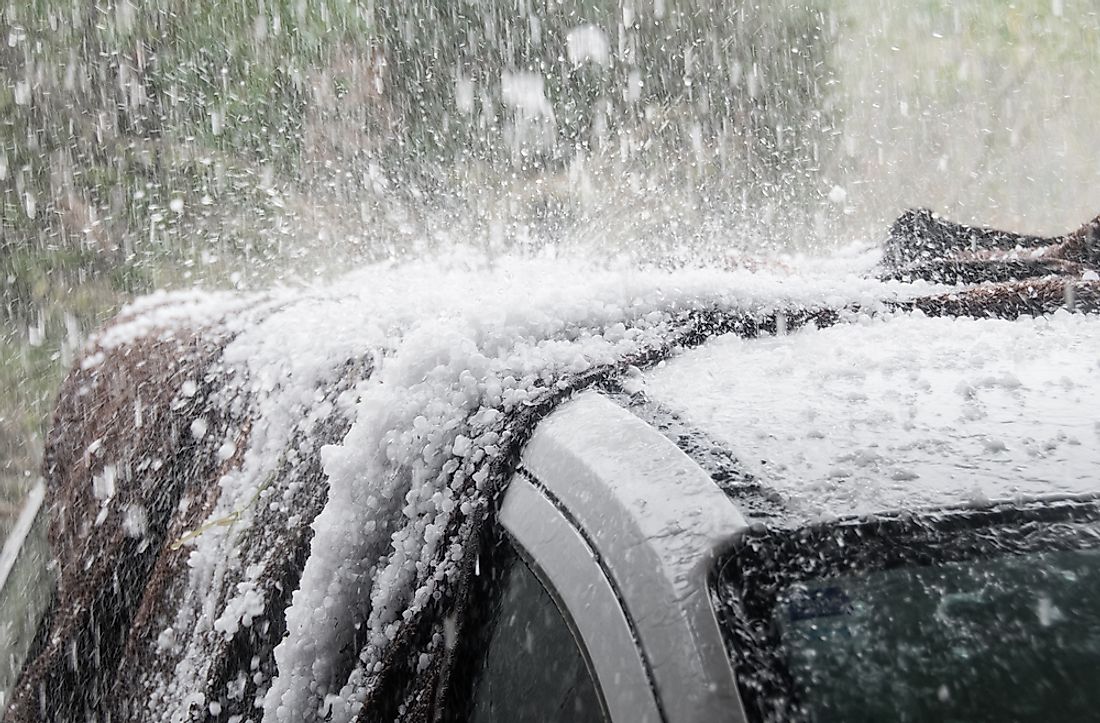The Different Types Of Meteorological Disasters

Disasters caused by extreme weather conditions are referred to as meteorological disasters. Such disasters are usually related to sudden and adverse changes in the weather or weather-forming processes. Extreme heat, excessive rainfall, and strong winds affecting the Earth’s atmosphere in a negative manner and causing death or destruction are labeled as meteorological disasters.
Types of Meteorological Disasters
Blizzards
A severe snowstorm with a strong and sustained wind speed of more than 35 mph is considered a blizzard. Such storms last for several hours and cause great harm to life and property in the area of occurrence. Blizzards are not only caused by falling snow but might also result from strong winds blowing away loose snow on the ground. The Great Blizzard of 1888 was one of the worst blizzards in recent history. Significant wheat crops were destroyed in the United States during the event.
Hailstorms
A hailstorm is a phenomenon in which ice pellets fall to the ground as a form of solid precipitation. The irregular lumps of ice that fall during such storms are called hailstones. Modern technology makes it possible to detect hail forming thunderstorms using sophisticated meteorological instruments. Hail is highly damaging to property, as well as vegetation and crops. In the absence of proper cover, hailstones of large size can also cause physical harm to people and animals. One of the most damaging hail events occurred in Munich, Germany on July 12, 1984, causing damages worth at least $2 billion in insurance claims.
Droughts
Significantly lower than normal levels of rainfall in an area over a sustained period of time can lead to unusual dryness of soil. Such soil is unable to support plant life including agricultural crops, resulting in a drought. Various other factors like high temperatures, water shortage, and hot winds can also contribute to the severity of drought. Famines triggered by crop failure are often caused as the after-effects of a drought. Humanitarian crises and mass migrations often result from prolonged droughts.
Heat Waves
A heat wave occurs when the temperature of an area becomes excessively hot and exceeds normal seasonal limits. Hot weather during a heat wave might also be accompanied by high levels of humidity. Severe heat waves can result in massive crop failure, power outages across large areas, and even deaths. One of the worst heat waves in recent history was the European Heat Wave of 2003.
Tornadoes
Tornadoes are extremely dangerous and violent rotating air columns that move at high speeds across a large area and damage everything in their path. The base of a tornado is always in touch with the Earth’s surface, while the top is in contact with a cumulonimbus cloud. A tornado generally appears like a condensation funnel, with the narrow edge touching the Earth. The wind speed of a tornado can vary from less than 117 km/h to greater than 480 km/h.
Cyclonic Storms
A cyclonic storm is a destructive meteorological phenomenon that forms when a large air mass rotates around a central low atmospheric zone. Such storms originate over oceans and usually move towards land where they cause great destruction to life and property. A cyclone can also be referred to as a hurricane or typhoon, depending on its origin. For example, the term "hurricane" is used to refer to cyclonic storms that arise in the Northeast Pacific and Atlantic Oceans. Storms of a similar nature arising in the Indian and South Pacific Oceans are called "cyclones," while the term typhoon is used to refer to storms originating in the Northwest Pacific Ocean. The 1970 Bhola Cyclone is considered to be the deadliest cyclone ever recorded, striking Bangladesh and causing 500,000 deaths.
Thunderstorms
A thunderstorm is a meteorological phenomenon associated with intense lightning and its acoustic effect, thunder. Such storms can also be called electrical storms or thundershowers. These weather events are usually accompanied by heavy rainfall and strong winds. Occasionally, snow, hail or sleet might also fall during thunderstorms. Lightning can kill people, animals, and plants that come in direct contact with the electrical flashes, as well as triggering fires or damaging buildings. The strong winds and heavy precipitation associated with powerful thunderstorms also add to the damaging effects of such weather events. The crash of the LANSA Flight 508 is an example of a thunderstorm-related disaster. The flight crashed in a thunderstorm while en route to Pucallpa from Lima, Peru, resulting in 91 deaths.







